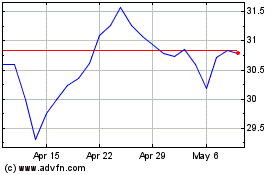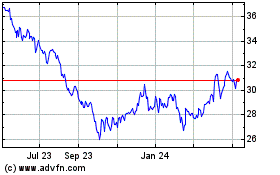U.S. corporations remain hesitant to give the gift of a new job
this holiday season, except for a select few.
That's the sentiment among chief executives gathered at The Wall
Street Journal's CEO Council in Washington, D.C. Leaders from
across the corporate landscape spoke of cautiousness in rebuilding
work forces reduced severely during the worst economic downturn in
generations.
"We aren't close to needing to hire people in a significant
way," said Mike Splinter, chief executive of semiconductor
equipment maker Applied Materials Inc. (AMAT). The company now
employs about 15% fewer people than two years ago, largely as a
result of layoffs, Splinter said.
Other companies also are waiting to hire. As of October, the
U.S. unemployment rate--at 10.2%--was the highest since April 1983,
and the percentage of those who are unemployed, marginally attached
to the labor force, or working part time because they have no other
option stood at 17.5%.
Stephen P. MacMillan, chief executive of orthopedic product
maker Stryker Corp. (SYK), doesn't foresee much improvement. "I
don't see the employment picture changing much over the next year,"
he said.
And improvement may not come from large businesses, said Rupert
Murdoch, chief executive of News Corp. (NWS), publisher of this
newswire and The Wall Street Journal.
"You've got a huge number of unemployed here in the United
States, and we're not going to get that cured or people reemployed
until we get the formation of small business on a big scale,"
Murdoch said.
Meanwhile, Thomas Glocer, chief executive of Thomson Reuters
Corp. (TRI), said the U.S. should see a "slow climb back to
employment," calling it "a serious economic and political issue"
because some jobs aren't coming back as they've been eliminated,
sent overseas or replaced by technology.
The hesitancy of companies to hire comes despite a surge in
productivity in the third quarter, possibly indicating that
existing workers are being stretched to do more.
Splinter said that in Applied Materials' case, the company's
recruitment plans depend "on how fast our customers see
improvement." Similarly, he did not foresee an imminent end to the
company's cost-cutting efforts that are part of a broad efficiency
drive.
"We want to become more efficient because we will be stronger"
once the economy fully recovers, Splinter said.
Those companies that are hiring are doing so strategically.
"Selectively, we're hiring on certain projects," said John
Chambers, chief executive of networking giant Cisco Systems Inc.
(CSCO). While most of the hiring is being done in the company's 30
new business ventures, he said some new jobs still tie into the
core routing and switching business.
Job creation usually lags capital investments by a few quarters,
Chambers said, noting that the company has done its investing
through several recent acquisitions.
The theme of selective hiring was echoed by CEOs from companies
as diverse as food maker Conagra Foods Inc. (CAG),
communications-chip supplier Broadcom Corp. (BRCM), and power
companies Progress Energy Inc. (PGN) and Calpine Corp. (CPN).
Nearly 100 chief executives are attending the annual WSJ CEO
Council meeting Monday and Tuesday in the nation's capital to
discuss business and political issues, and meet with top
policymakers. Participants scheduled to attend include White House
Chief of Staff Rahm Emanuel; Health and Human Services Secretary
Kathleen Sebelius; Council of Economic Adviser Chair Christina
Romer; and U.S. Sen. John McCain, (R, Ariz.).
To be sure, not all chief executives attending the meeting
halted hiring during the downturn. Among them is Surya N.
Mohapatra, chairman and CEO of Quest Diagnostics Inc. (DGX)
"I never stopped hiring," he said. "Every year, we hire almost
2,000 people," including engineers, scientists and managers. The
company also maintained merit raises and avoided significant
layoffs, Dr. Mohapatra noted.
Instead, he continued, "we made the company more efficient" in a
variety of ways. How soon Quest Diagnostics accelerates its current
pace of hiring is unclear, however. A big uptick "won't happen
overnight," the CEO said.
-By Roger Cheng, Dow Jones Newswires; 212-416-2153;
roger.cheng@dowjones.com
-By Joann S. Lublin, The Wall Street Journal,
joann.lublin@wsj.com
(Jon Kamp, Mark Peters, George Stahl and Paul Ziobro contributed
to this report.)
ConAgra Brands (NYSE:CAG)
Historical Stock Chart
From Jun 2024 to Jul 2024

ConAgra Brands (NYSE:CAG)
Historical Stock Chart
From Jul 2023 to Jul 2024
